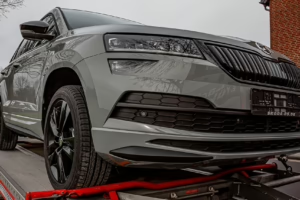The Rise of BMW’s M Series: Performance Cars That Redefine Speed
In the automotive world, few names evoke as much reverence and excitement as BMW’s M Series. Launched in the 1970s, the M (short for "Motorsport") badge has become synonymous with high performance, precision engineering, and relentless innovation. Over the decades, the M Series has established itself as a benchmark for sports cars and has redefined what it means to drive fast. This article explores the evolution of the M Series, highlighting its impact on the automotive landscape and the reasons behind its enduring appeal.
The Origins: A Legacy in Motorsport
The inception of the M Series can be traced back to 1972 with the establishment of BMW’s Motorsport division. Initially aimed at enhancing the performance of BMW models for racing, the division produced the iconic BMW 3.0 CSL, which achieved success in various racing championships. The launch of the first official M model, the BMW M1, in 1978 solidified the brand’s commitment to performance. Although production was limited, the M1’s striking design and impressive capabilities set the groundwork for future M vehicles.
The 1980s: The Golden Age of the M Series
The 1980s marked a turning point for the M Series, with the introduction of legendary models like the BMW M3 E30 and M5 E28. The M3 E30, often regarded as the quintessential sports coupe, merged lightweight construction with a high-revving inline-six engine. Its success on both the road and the racetrack propelled the M Series into the hearts of car enthusiasts worldwide. The E28 M5, touted as the world’s first super sedan, combined luxury and performance, offering a glimpse into the future of high-speed family cars.
Evolution Through the Decades
As BMW continued to innovate, each decade brought forth iconic new models that pushed boundaries:
-
1990s: The M Series embraced technological advancements, introducing models like the M3 E36 and M5 E39. Each new iteration enhanced handling, aerodynamics, and driver engagement, cementing the M Series’ reputation for thrilling dynamics.
-
2000s: The M models grew more powerful, with the M3 E46 and M5 E60 featuring advanced engines like the iconic V10. This era saw the introduction of the M division’s first foray into SUV territory with the X5 M, expanding their performance philosophy beyond traditional sedans and coupes.
- 2010s: The M Series adapted to changing automotive landscapes. Models such as the M4 and M2 became favorites, blending modern technology with classic M characteristics. Turbocharged engines began to dominate, yielding more power and efficiency, while performance figures soared.
The Modern Era: A New Chapter of Innovation
Today, the M Series stands at the forefront of automotive performance. The M3 G80 and M5 F90 showcase BMW’s commitment to performance, with advanced technology, dynamic all-wheel-drive systems, and smart driver aids that enhance both performance and safety. Electric and hybrid models, such as the upcoming i4 M50, signify a new era where performance meets sustainability.
The M Philosophy: More Than Just Speed
What sets the M Series apart is not just blistering speed but a holistic approach to performance. BMW emphasizes the relationship between driver and machine, focusing on feedback, precision, and agility. The legendary M engineering creates a visceral driving experience that resonates with automotive aficionados.
Conclusion: The Future of the M Series
As the automotive industry moves towards electrification and sustainable innovation, the M Series is poised to continue its legacy. Whether through hybrid powertrains or cutting-edge technology, BMW’s M division is committed to delivering exhilarating performance while adapting to the demands of a changing world.
The M Series is not merely a collection of high-performance vehicles; it is a philosophy, a celebration of speed, agility, and the sheer joy of driving. As enthusiasts eagerly await the next generation of M cars, one thing remains clear: the M Series will always redefine speed.
For more in-depth information, you can explore this source.


























I don’t think the title of your article matches the content lol. Just kidding, mainly because I had some doubts after reading the article.